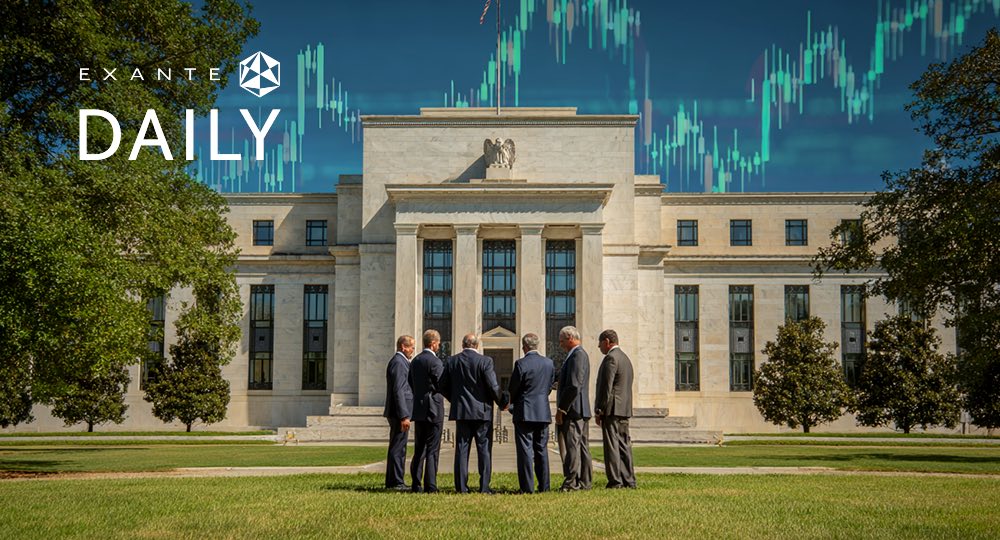Corporate Earnings News
Global market indices
Currencies
Cryptocurrencies
Fixed Income
Commodity sector news
Key data to move markets this week
Global macro updates
US Stock Indices Price Performance
Nasdaq 100 +5.28% MTD +9.80% YTD
Dow Jones Industrial Average +5.44% MTD +5.79% YTD
NYSE +3.60% MTD +8.21%YTD
S&P 500 +5.39% MTD +11.26% YTD
The S&P 500 -0.02% over the past week, with 10 of the 11 sectors having exhibited positive performance MTD. The Equally Weighted version of the S&P 500 posted a weekly -0.49%, its performance is +3.68% MTD +5.82% YTD.
The S&P 500 Information Technology is the leading sector this month, up +9.72%MTD +16.68%YTD, while the Energy sector has exhibited the weakest performance at -2.05% MTD +9.42%YTD.
On Wednesday, US equities experienced declines following the release of minutes from the Fed's most recent policy meeting. The minutes revealed ongoing concerns about persistent inflation and uncertainty regarding the timeline for potential interest rate cuts.
The S&P 500 and Nasdaq 100 dipped -0.27% and -0.05%, respectively, after both indices had reached record highs in the previous session. The Dow Jones Industrial Average also fell by approximately 200 points, representing a -0.51% decrease.
Investor attention was focused on Nvidia's earnings results, released after the market closed. Despite a slight dip of -0.46% during regular trading, the stock rose in after-hours trading following the chip maker's announcement of record quarterly revenue, a raised dividend, and a 10-for-1 stock split.
While US tech earnings have been a highlight of the first-quarter reporting season, outpacing the broader market in terms of revisions, earnings results also indicate a wider market expansion. Maintaining a balanced exposure to this broadening market is crucial for investors seeking to outperform in 2024.

While the somewhat hawkish tone of the Fed minutes was anticipated, given that the meeting preceded last week's cooler inflation data, the initial negative reaction in major stock indexes suggested that the market was not entirely receptive to the sentiment.
In corporate news, DuPont announced plans to split into three publicly traded companies, joining a growing trend among industrial conglomerates seeking to enhance returns by dividing into smaller, more specialised businesses. The electronics and water units will be separated through tax-free transactions, while the remaining operations will focus on industries such as biopharma and medical devices.
This strategic move aligns with similar actions taken by corporate giants like Johnson & Johnson, United Technologies, Danaher, and General Electric, all of whom have pursued breakups in recent years with the goal of creating additional value for shareholders.
Upon completion of the split, which is expected to occur within 18 to 24 months, subject to shareholder approval and regulatory clearance, the remaining company will be the largest of the three, accounting for approximately $6.6 billion of DuPont's 2023 sales. The electronics and water businesses to be spun off generated $4 billion and $1.5 billion in revenue last year, respectively.
US stocks
Mega caps: A mixed week for the ‘Magnificent Seven’ due to high expectations of the AI rally broadening and becoming an essential element of the Magnificent Seven story. Tesla +3.52%, Alphabet +2.24%, Microsoft +1.76%, Apple +0.62%, and Nvidia +0.34%, while Meta Platforms -2.85% and Amazon -1.54%were the only members who lost ground.
Beyond expectations: Nvidia's Q1 earnings blowout solidifies AI leadership, stock surges.Nvidia reported record-breaking results for its first quarter of 2024, solidifying the ongoing momentum of the AI boom. The company's revenue more than tripled to $26 billion, with net profit surging over sevenfold to $14.88 billion. Adjusted EPS reached $6.12, exceeding analysts' estimates of $24.7 billion in sales and $5.65 in EPS.
Nvidia's projected sales for the current fiscal quarter of approximately $28 billion also surpassed expectations, representing a near doubling compared to the same period last year. Nvidia achieved its 6th consecutive earnings triple play on Wednesday, a remarkable feat considering the already high expectations.
The data-centre division, now Nvidia's primary revenue driver, generated $22.6 billion in revenue last quarter, while gaming chips contributed $2.6 billion. These figures exceeded analysts' projections of $21 billion for the data-centre unit and $2.6 billion for gaming.
Following the earnings report, Nvidia's stock surged 6% in after-hours trading, surpassing the $1,000 per share threshold, though the company announced a 10-for-1 stock split effective 7th June. Additionally, the company increased its dividend by 150% to 10 cents per share based on the current share count.
During the earnings call, Nvidia's CFO, Colette Kress, revealed that major cloud-computing providers such as Alphabet's Google, Microsoft, and Amazon.com accounted for approximately 45% of the company's data-centre revenue, exceeding $10 billion.
Nvidia executives further emphasised that demand remains robust for both the company's current AI chip and its anticipated next-generation product, expected to launch later this year.

Energy stocks had a negative week this week as the energy sector itself was -2.04%, lessening the sector’s YTD performance to +9.42%. Shell -3.78%, Chevron -3.36%, Halliburton -2.65%, ExxonMobil -2.61%, Baker Hughes -2.55%, Phillips 66 -2.26%, ConocoPhillips -2.08%, Apa Corp (US) -1.34%, and Occidental Petroleum -1.14%, while Marathon Petroleum +1.95%.
Materials and Mining stocks had a negative week, as the materials sector was -0.74%, decreasing the sector’s YTD performance to +6.53%. Sibanye Stillwater +6.76%, Freeport-McMoRan -4.44%, Newmont Mining -1.85%, Nucor -2.90%, Mosaic +5.10%, and CF Industries +6.50%, while Albemarle -0.85% and Yara International +3.26%.
European Stock Indices Price Performance
Stoxx 600 +3.23% MTD +8.81% YTD
DAX +4.17% MTD +11.51% YTD
CAC 40 +1.34% MTD +7.28% YTD
IBEX 35 +4.37% MTD +12.15% YTD
FTSE MIB +2.54% MTD +14.01% YTD
FTSE 100 +2.78% MTD +8.24% YTD
UK blue-chip stocks experienced their most significant monthly decline in over a month, as stronger-than-anticipated inflation figures diminished expectations of interest rate cuts by the BoE.
London's FTSE 100 index concluded the trading day -0.55% at 8,370.33, marking its largest one-day decrease since mid-April. This decline followed economic data revealing a 2.3% annual increase in consumer prices for April, slightly surpassing the 2.1% forecast.
European markets also experienced declines, with the region-wide Stoxx 600 and Germany's DAX closing -0.34% and -0.25%, respectively. France's CAC 40 experienced a more substantial drop of -0.61%.
Other Global Stock Indices Price Performance
MSCI World Index +4.85% MTD +9.35% YTD
Hang Seng +8.06% MTD +12.60% YTD
This week, the Hang Seng Index increased by +0.64%, while the MSCI World Index fell by -0.19%.
Currencies
EUR +1.45% MTD -1.93% YTD to $1.0826
GBP +1.83% MTD -0.10% YTD to $1.2718
The euro was -0.53% against the USD over the past week, while the British Pound was +0.28%.
Sterling experienced a slight increase on Wednesday, while UK stock futures declined following Prime Minister Rishi Sunak's announcement of a parliamentary election scheduled for 4th July.
The British currency reflected a gain of +0.02% to reach $1.2718, a marginal increase from pre-announcement levels. Market focus remains heavily on the BoE and the US dollar, with the upcoming election adding another layer of significance for the pound.
Sterling options volatility, which gauges trader demand for protection against potential price fluctuations, increased for contracts encompassing July 4th. Notably, two-month options volatility rose to 6.08%, marking the most substantial one-day increase since mid-April
The Dollar Index this week is +0.43%, and -1.24% MTD, however and maintains a YTD gain of +3.52%.
Cryptocurrencies
Bitcoin +13.82% MTD +64.95% YTD to $69,263.00.
Ethereum +23.61% MTD +62.77% YTD to $3,737.10.
Bitcoin and Ethereum have been in positive territory over the past week, gaining +4.14% and +22.90%, respectively.
Crypto prices have surged this week following indications of progress toward the approval of ETFs in the US that invest directly in Ether, the second-largest cryptocurrency. This represents a notable shift from the more pessimistic outlook observed just last week.
The speculative fervour surrounding these ETFs echoes the investor enthusiasm that accompanied the inception of similar US Bitcoin funds. The launch of these Bitcoin ETFs in January triggered a rally in the largest digital asset, propelling it to record highs.
On Monday, Ether experienced a significant increase of nearly 14%, marking its steepest rise since November 2022. Concurrently, Bitcoin approached $72,000, nearing its all-time high of almost $74,000 recorded in mid-March.
According to Bloomberg, the US Securities and Exchange Commission (SEC) has engaged with at least one exchange and one prospective Spot Ether ETF issuer to revise related 19b-4 filings. While this dialogue represents an unexpected development, it does not guarantee approval.
Beyond 19b-4 filings, issuers must receive SEC approval of their S-1 registration statements before product launch. A decision on at least one Spot Ether ETF application is expected by 23rd May.
Despite its generally stringent stance on cryptocurrencies, the SEC reluctantly approved US Spot Bitcoin ETFs at the beginning of the year following a court ruling in 2023. These products, offered by firms such as BlackRock and Fidelity, have accumulated $58.8 billion in assets, marking one of the most successful fund category launches in history. BlackRock and Fidelity are now also seeking to establish Ether funds.

Note: As of 6:30 pm EDT 22 May 2024
Fixed Income
US 10-year yield -25.9 basis points MTD +49.2 basis points YTD to 4.428%
German 10-year yield -4.8 basis points MTD +53.0 basis points YTD to 2.539%.
UK 10-year yield -11.3 basis points MTD +69.7 basis points YTD to 4.236%.
US Treasury 10-year bond yields increased by +8.4 basis points (bps) this week, reaching 4.428%.
The US Treasury Department successfully auctioned $16 billion in 20-year bonds on Wednesday, with a high yield of 4.635%, consistent with pre-auction trading levels. However, the bid-to-cover ratio, a measure of demand, was 2.51x, marking the lowest level since February. Looking ahead, the Treasury is set to auction an additional $16 billion in 10-year Treasury TIPS on Thursday.
Market expectations, as reflected in Fed funds futures, indicate a 40 bps reduction in the federal funds rate by the end of the year, with the possibility of the initial cut occurring as early as September.
The benchmark German 10-year yield increased by +11.4 bps, while the UK 10-year yield advanced by +16.7 bps to 4.236%. The spread between US 10-year Treasuries and German Bunds currently stands at 188.9 bps, down from around 220 bps in mid-April and a -3 bps decrease from 191.9 bps last week.
Italian bond yields, a benchmark for the eurozone periphery, experienced an increase of +11.8 bps to 3.829%. Consequently, the spread between Italian and German 10-year yields was little changed at 129 bps.
While markets widely anticipate a June rate cut by the ECB, the subsequent trajectory remains uncertain. Current market pricing suggests a further 25 bps reduction in the autumn, with the possibility of an additional cut before year-end.
Commodities
Gold spot +4.27% MTD +15.85% YTD to $2,389.20 per ounce.
Silver spot +16.87% MTD +29.33% YTD to $31.15 per ounce.
West Texas Intermediate crude -5.90% MTD +9.28% YTD to $78.56 a barrel.
Brent crude -5.32% MTD +6.10% YTD to $81.74 a barrel.
Gold prices fell for a second consecutive straight session on Wednesday after minutes from the most recent FOMC meeting indicated that some officials were inclined to raise interest rates.
Spot gold prices have climbed +0.35% this week, the highest level in four weeks.
Oil prices experienced a third consecutive session of decline on Wednesday, following the release of FOMC meeting minutes indicating potential further interest rate hikes if inflation persists, raising concerns about a decrease in oil demand. Both benchmark Brent crude futures and WTI futures fell by over 1% on Wednesday.
Adding to market pressure, the Energy Information Administration reported a 1.8 million barrel increase in US crude stocks last week, contrary to expectations of a 2.5 million-barrel decrease. Global physical crude markets have also faced challenges due to soft refinery demand and ample supply.
Recent market weakness can be attributed to several factors, including rising oil inventories, subdued demand, weak refinery margins, and the growing risk of production cuts. Additionally, the Russian Energy Ministry announced on Wednesday that it exceeded its OPEC+ production quota in April due to "technical reasons," and plans to present a compensation plan to the OPEC Secretariat.
Despite these developments, the market widely anticipates OPEC+ maintaining its production cuts through the third quarter of this year when it convenes on 1st June.
Note: As of 6 pm EDT 22 May 2024
Key data to move markets this week
EUROPE
Thursday: Eurogroup Meeting, German HCOB Composite, Manufacturing and Services PMIs, Eurozone HCOB Composite, Manufacturing and Services PMIs, Eurozone’s Negotiated Wage Rates, and Consumer Confidence.
Friday: Eurogroup Meeting, German GDP, and speeches by Deutsche Bundensbank’s President Nagel and ECB Board Member Isabel Schnabel.
Monday: Eurogroup Meeting, German IFO Business Climate, Current Assessment, and Expectations.
Tuesday: Eurogroup Meeting, German Wholesale Prices.
Wednesday: German GfK Consumer Confidence, CPI and Harmonised Index of Consumer Prices, Spanish Retail Sales, and Italian Business and Consumer Confidence.
Thursday: Spanish CPI and Harmonised Index of Consumer Prices, Eurozone Business Climate, Consumer Confidence and Economic Sentiment surveys, EU Unemployment Rate, and Italian PPI.
UK
Thursday: S&P Global/CIPS Composite, Manufacturing and Services PMIs.
Friday: Gfk Consumer Confidence, Retail Sales, and Spanish PPI.
Tuesday: A speech by BoE MPC member Catherine Mann.
Thursday: A speech by BoE Governor Andrew Bailey.
US
Thursday: Initial and Continuing Jobless Claims, New Home Sales, S&P Global Composite, Manufacturing and Services PMIs.
Friday: Durable Goods Orders, Michigan Consumer Sentiment Index and Inflation Expectations, and a speech by Fed Governor Shristopher Waller.
Monday: US markets closed on Memorial Day.
Tuesday: Housing Price Index, Consumer Confidence, Dallas Fed Manufacturing Index, and speeches by Cleveland Fed President Loretta Mester, Fed Governor Michelle Bowman, and Minneapolis Fed President Neel Kashkari
Wednesday: Fed Beige Book, a speech by New York Fed President John Williams.
Thursday: Initial and Continuing Jobless Claims, GDP, Pending Home Sales, and Personal Consumption Expenditures Prices (PCE).
CHINA
Thursday: Manufacturing and Services PMI.
JAPAN
Thursday: CPI.
Wednesday: Trade Balance.
Thursday: Industrial Production, Retail Sales, and Unemployment Rate.
Global Macro Updates
Minutes highlight Fed's cautious approach amidst inflation uncertainty. At their most recent policy meeting, Federal Reserve officials expressed continued confidence in the gradual easing of price pressures in the coming months. However, doubts arose regarding the sufficiency of current interest rates to guarantee this outcome, with "various" officials indicating a willingness to raise borrowing costs again if inflation surges. This meeting pre-dated data revealing a slowdown in consumer price increases in April, yet it reflected the heightened uncertainty among Fed officials about the trajectory of inflation and monetary policy.
According to the minutes of the 30th April 30 - 1st May meeting, "Participants... noted that they continued to expect that inflation would return to 2% over the medium term," but "the disinflation would likely take longer than previously thought." While the current policy response involves maintaining the Fed's benchmark policy rate within the 5.25% - 5.50% range, "various participants mentioned a willingness to tighten policy further should risks to inflation materialise in a way that such an action became appropriate." The use of the modifier "various," not typically included in the minutes' usual lexicon, suggests a significant number of officials expressed this viewpoint.
Since then, Fed Chair Jerome Powell and other policymakers have indicated that further rate hikes are unlikely. Notably, the minutes released on Wednesday omitted specific reference to this notion and the possibility of rate cuts this year. In contrast, the 19th - 20th March meeting minutes stated that participants "judged that the policy rate was likely at its peak for this tightening cycle, and almost all participants judged that it would be appropriate to move policy to a less restrictive stance at some point this year if the economy evolved broadly as they expected."
The latest minutes instead revealed an emerging debate concerning the degree of restrictiveness in current monetary policy, a crucial consideration that could impact the speed at which inflation returns to the central bank's 2% target, or whether it reaches that goal at all.
The impact of high interest rates on the economy has not been as severe as some Fed officials anticipated, a positive development for the job market but one that raises questions about inflation. "Although monetary policy was seen as restrictive, many participants commented on their uncertainty about the degree of restrictiveness," the minutes from the last meeting stated, with officials suggesting that changes in the economy may have simply reduced the effectiveness of the Fed's short-term interest rate in influencing consumer and business spending and investment.
Since the last policy meeting, Fed officials have tempered expectations for imminent rate cuts, which investors now anticipate starting in September. While acknowledging the risk of renewed inflationary pressures, officials largely viewed the data from early this year as a temporary setback in the fight to return inflation to the 2% target.
The 30th April 30 - 1st May meeting marked the sixth consecutive gathering without a change in interest rates. Policymakers now appear likely to maintain the Fed's benchmark rate until at least September, as their confidence in easing price pressures was shaken by higher-than-expected inflation during the first quarter.
Recent weeks have shown signs of easing inflation, softening demand, and a more balanced labour market. Fed officials are closely monitoring for signs of a potential slowdown in consumption, with warnings from consumer-facing companies pointing in that direction.
Nevertheless, Fed officials maintain that achieving "greater confidence that inflation is moving sustainably toward 2 percent," a prerequisite for shifting to rate cuts that has been incorporated into their policy statements since January, will require more time.
Services inflation and wage growth keep UK inflationary pressures high. The deceleration of inflation in Britain during April fell short of expectations, with a key core measure of prices barely declining. This development led investors to withdraw their predictions of BoE rate cut in the upcoming month.
The Office for National Statistics reported that the consumer price index (CPI) rose by 2.3% in the 12 months leading upto April, a significant decrease from March's 3.2% increase and the lowest rate since July 2021. However, the BoE and economists had anticipated a more substantial drop to 2.1%, slightly above the central bank's 2% target, following a significant reduction in household energy tariffs in April.
Services inflation, a crucial indicator of domestic price pressure for the BoE and a shared concern in other European countries, exceeded expectations, and petrol prices increased. While another labour market and CPI report is due before the June meeting, the likelihood of sufficient data to instil confidence among most BoE members for a June rate cut seems remote.
Services inflation marginally decreased to 5.9% from 6.0% in March, despite BoE forecasts and economists predicting a reading of 5.5%. Core inflation, excluding energy, food, and tobacco, also revealed persistent price pressures, with the annual rate falling only to 3.9% from 4.2% in March, contrasting with economists' forecast of 3.6%.
Despite the Wednesday data indicating a lower inflation rate in Britain compared to the US, Canada, France, and Germany, the country's inflation record since 2020 remains poor among Western European nations. Consumer prices have risen by over 22% during this period, with only the Netherlands, Austria, and Germany experiencing similar levels.
The BoE has projected a resurgence in CPI later this year, culminating in a rate of around 2.6% by the end of 2024. Recent labour market data has shown only a marginal easing of private sector regular wage growth in the three months leading upto March, maintaining the BoE's vigilance regarding inflationary pressures within the economy.
While every effort has been made to verify the accuracy of this information, EXT Ltd. (hereafter known as “EXANTE”) cannot accept any responsibility or liability for reliance by any person on this publication or any of the information, opinions, or conclusions contained in this publication. The findings and views expressed in this publication do not necessarily reflect the views of EXANTE. Any action taken upon the information contained in this publication is strictly at your own risk. EXANTE will not be liable for any loss or damage in connection with this publication.
Ця стаття надається вам лише для інформаційних цілей і не повинна розглядатися як пропозиція або запит на купівлю або продаж будь-яких інвестицій або пов'язаних послуг, які можуть бути згадані тут. Торгівля фінансовими інструментами пов'язана зі значним ризиком втрат і може підходити не всім інвесторам. Минулі результати не є надійним показником майбутньої ефективності.






